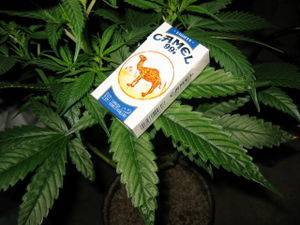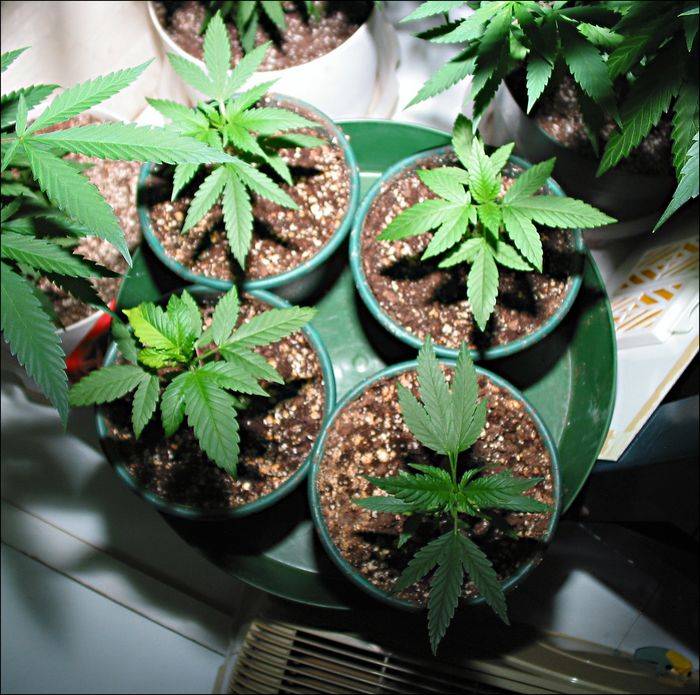http://www.botgard.ucla.edu/html/bo...s/generalstructure/leafcolor/variegation.html
Variegated Leaves
Total absence of plastid pigments causes a sector of a leaf or stem to have white patches. This condition is termed variegation (Metrosideros). Variegation is produced when there is a cell mutation (cytological chimera), and all cells produced from that mutant mother cell lack the pigments, either because plastids are not present or the plastid cannot complete the manufacture of the pigment apparatus. White, therefore, is where color is missing. The zones where chloroplasts are not present are zones where no photosynthesis will occur, hence a variegated leaf has a lowered potential to fix carbon dioxide into sugars, and as a consequence, a variegated plant also tends to grow more slowly.
Variegated leaves occur rarely in nature but are extremely common among indoor and outdoor ornamentals, where they have been saved as horticultural oddities. Species with variegated individuals are sometimes found in the understory of tropical rain forest, and this habitat is the source of a number of variegated house plants. The appearance of variegation in the tropical forest understory, if not simply by accident, has not been given a plausible explanation.
Some variegated ornamentals have only a fringe of white around the leaf (Example: Pittosporum), sometimes irregular dots (Examples: a bromeliad and Begonia) and spots (Examples: Dieffenbachia, an aloe, and an orchid), sometimes broad panels of white (Examples: a bromeliad, shell ginger, Pisonia, and a fig), and even an occasional leaf that is totally achlorophyllous (white; Example: Hedera helix). Among monocotyledons, strips of stem internode may also be achlorophyllous (Example: variegated sugar cane). On a single plant, you can observe leaves with all different degrees of variegation, but a plant may also produce individual leaves or entire shoots that are all green (Examples: Coprosma, Abutilon, Euonymus, and Bougainvillea), and which did not involve mother cells with mutant plastids. On the same plant, totally green leaves tend to be much larger than the variegated ones. Some very colorful variegated horticultural forms occur when the leaf cells can produce vacuolar pigments, such as anthocyanins, which then produce patches of pink where chlorophyll is absent (Example: Acalypha).
Out of the tropics have arisen some very unusual variegated forms (Example: a gesneriad). One of the most photographed is a species of Calathea, which has patches of green, surrounded by white tissue resembling a set of leaves within a single leaf blade.
It is easy to dismiss variegation as an uninteresting series of mutant forms, rare in nature, but there are some plants living in full-sun habitats that possess variegated leaves. Examples are certain species of clover (Trifolium), possessing a V-shaped clear mark on each leaflet. Among tropical epiphytes are numerous species of bromeliads and certain orchids. Typically, variegated individuals can persist in nature via cloning, i.e., vegetative propagation by forming new plants from buds, as in bromeliads, orchids, aloes, and agaves, rather than via seeds, which would necessarily be a rare event.
Many leaves have white or nongreen veins, causing the leaf to appear variegated (Examples: an aroid, Sanchezia, striped inch plant, and milk thistle). The white vein is caused by the absence of chlorophyll-bearing cells above or below the conducting tissues of the vein. Most commonly, no stomates are found directly on a vein, so the cells, incapable of receiving adequate carbon dioxide, are not equipped for photosynthesis. Leaves with white veins should not be classified as variegated, although they are sometimes also grown as horticultural oddities.
Last edited:




 so I also have to agree with stinkyattic (as usual) that packaged, processed cigs are worse for you than your plants.
so I also have to agree with stinkyattic (as usual) that packaged, processed cigs are worse for you than your plants.


